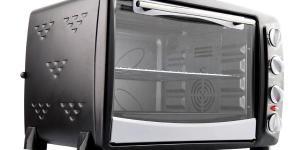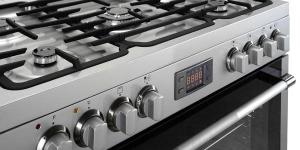What Are Electric Radiant Heaters?

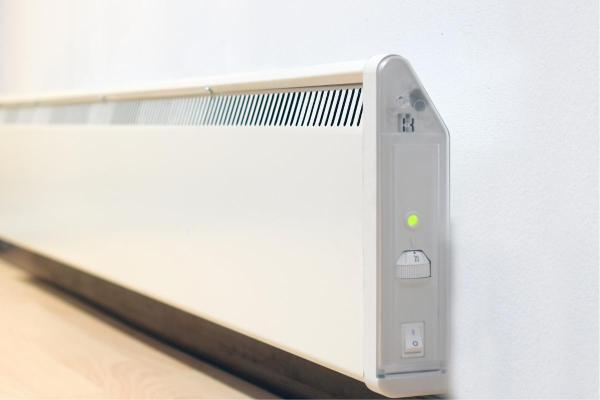
Making sure you meet your home heating needs correctly ensures optimum energy efficiency and cost savings. Even the most high-quality product might not be the right solution if it is used in the wrong way or for the wrong environment. A radiant heater is a home heating solution which can save you money if used in the correct way and is made of quality. It may also not be the best solution, depending on your specific needs. Despite its advantages, many people are still not aware of how a radiant heater can benefit them.
At oneHOWTO, we intend to remedy this by asking what are electric radiant heaters? We look at hoe radiant heaters work and how they differ from more traditional radiators.
What is an electric radiant heater?
A radiant heater is a fixed heating system that works when connected to an electrical network. Its main advantage is that it can provide targeted and direct heating to specific areas. This helps to meet specific heating needs without unnecessary energy consumption.
Radiant heaters also have high thermal inertia. High thermal inertia means they retain heat longer than many conventional heating systems. This high retention translates to approximately 30% less energy consumption, resulting in significant savings on energy. Consequently, household energy bills are often reduced.
Radiant heaters convert electrical energy into infrared heat. This works by warming objects directly rather than just heating the air. Different internal technologies and materials are used in radiant heaters. These include ceramics, metals or quartz. Each type of materials gives the radiant heater unique properties, making some better suited to certain spaces and heating requirements than others.
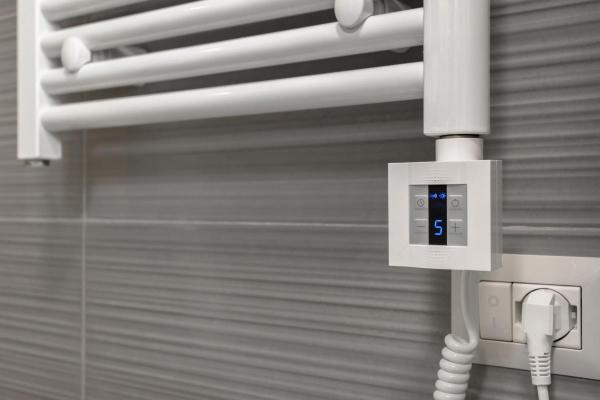
Characteristics of a electric radiant heaters
One standout feature of many radiant heaters is their programmability. Many models include programmable thermostats that allow users to set operating hours and target temperatures in advance. This feature enables the heater to maintain a comfortable temperature without needing to be turned on manually each time. By setting it to operate only when needed, users can optimize energy efficiency further and reduce overall costs.
Types of radiant heaters include:
- Ceramic radiant heaters: known for high thermal inertia, they take longer to reach peak temperatures but retain heat longer, allowing for a steady, lasting warmth.
- Quartz heaters: these heaters have a relatively low thermal inertia, providing rapid heating and cooling, ideal for immediate warmth but with lower heat retention.
- Infrared panels: often used for whole-room heating, they radiate warmth to all surfaces in the room evenly.
While many electric radiant heaters can be installed as a form of central heating, others are portable. This means they can be moved into different positions to heat different spaces. Many homes with more traditional central heating use radiant heaters as an alternative or accompaniment to their home heating system.
Are there smart radiant heaters?
Although most radiant heaters are programmable to some degree, others take it to the next level. Smart radiant heaters integrate timers and thermostat controls with monitoring of the ambient environment. You can set your presets, but then the smart electric radiant heaters will make adjustments as they are needed.
Many smart radiant heaters also come with Wi-Fi connectivity and app support, allowing users to monitor and control the heater remotely, set schedules and customize settings based on individual preferences or energy-saving goals. The built-in thermostats and sensors can even provide alerts telling you when they think you are using too much energy.
In addition to remote monitoring and better programming of schedules, smart electric radiant heaters can provide data reports on your energy usage. This can help you to know when you are using too much energy and better monitor your spending. Some may also be able to be integrated in other home energy systems to provide more comprehensive control.
To take further advantage, read our article on how to save money on heating.
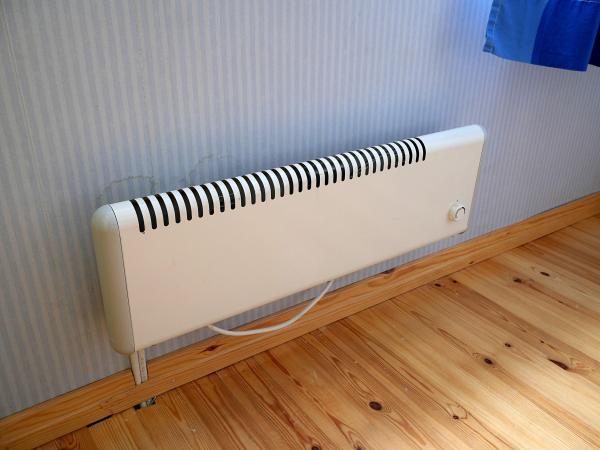
Differences between a thermal emitter and an electric radiator
It is not easy for the average user to know the difference between an electric radiant heater and more traditional radiators. Both have essentially the same function. With both devices, you can heat a home during the coldest months of the year. For this reason, we help you find the differences between both heating devices.
Heating method and energy transfer
- Electric radiant heaters: radiant heaters work by directly heating objects and surfaces in their line of sight, much like sunlight warms you directly on a cool day. This direct heating method is energy-efficient for quickly warming up specific areas rather than an entire room, making them ideal for targeted heating.
- Traditional radiators: these typically work by convection, heating the air that circulates around the unit and then gradually filling the room with warm air. Traditional radiators can use various elements (like oil, water or ceramic cores) and need to heat the surrounding air to create a warming effect. As a result, they take longer to heat a room, especially a larger space, but maintain the warmth for longer once heated.
Mobility and placement options
- Electric radiant heaters: often portable and lightweight, radiant heaters can be easily moved from room to room. They’re popular as temporary heating solutions or supplementary heating sources that can be unplugged and stored when not in use. They can also be installed on the wall if we wish.
- Traditional radiators: while some traditional radiators, are portable, many are designed to be installed permanently on walls, particularly in homes or buildings that rely on central heating systems. They stay in place once installed to providing more stable and consistent heat.
Energy storage and efficiency
- Electric radiant heaters: since they do not store much heat, radiant heaters stop emitting warmth almost immediately after they are turned off. This feature can help reduce energy costs, as they allow precise control over heating duration and intensity. However, they are less effective in maintaining a consistent temperature over time.
- Thermal emitter radiators (heat accumulators): unlike typical electric radiant heaters, some advanced radiators, known as thermal emitters or heat accumulators, are designed to store heat during off-peak hours when electricity rates are lower. They then release the stored warmth gradually throughout the day. Thermal emitters can be static and release heat slowly without a fan. Dynamic heaters use fans to distribute warmth more quickly across the room.
Noise levels and maintenance
- Electric radiant heaters: radiant heaters are generally quiet, but those with built-in fans may produce minimal noise. They also require minimal maintenance since they have few moving parts.
- Traditional radiators: especially dynamic ones with fans, thermal emitters may emit a slight hum, but generally, both static and dynamic emitters operate with low noise levels. Oil-filled and water-based radiators may also make occasional noises, like popping or gurgling, as the fluids heat up.
Cost differences and longevity
- Electric radiant heaters: these are often less expensive upfront than thermal emitters or oil-filled radiators, making them a cost-effective option for short-term or supplemental heating.
- Traditional radiators (thermal emitters): thermal emitters tend to be more expensive due to their advanced heat storage capabilities and installation requirements. Their efficiency in storing and distributing heat can lead to cost savings on energy bills over time, particularly in regions with significant electricity rate differences between peak and off-peak hours.
As you can see radiant heaters have certain advantages and disadvantages when compared to more traditional convection radiators. For this reason, deciding which is best for you is something you need to consider carefully. If you do choose a more traditional version, you may want to know how to clean dust out of your radiator.
If you want to read similar articles to What Are Electric Radiant Heaters?, we recommend you visit our Maintenance and home security category.

